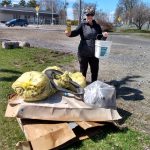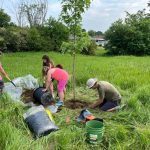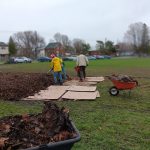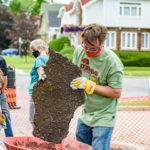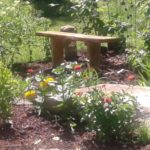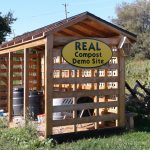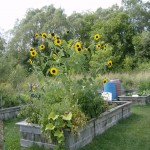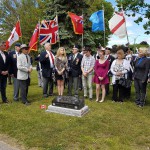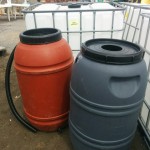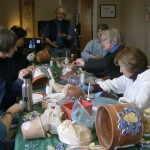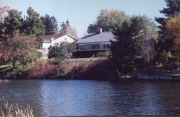 |
Kemptville Creek in Kemptville: restored buffer with restricted access point. This former lawn running down to the creek had high potential for erosion and rapid delivery of fertilizer and pollutants to the creek. The slope is now covered with natural vegetation and is protected by a restricted access point using stairs to prevent erosion. The property to the left still has lawn to the creek edge. The property to the right has a solid barrier which provides no wildlife habitat. |
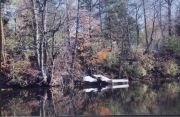 |
Kemptville Creek in Kemptville: low-impact access (stairs) and floating dock. The steep shore here would erode if not carefully protected. Steps provide that protection. A floating dock does not disturb the creek bottom and provides cover for fish and other aquatic life. |
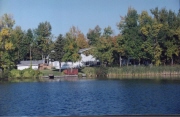 |
Rideau River near Merrickville: small footprint dock, deck on land, shoreline stabilization with rubble rip-rap. A dock with small diameter posts has minimal impact on the river bottom and its fauna. Decks built on land, as shown here, also eliminate effects on the river bed. Shoreline stabilization can be done with rock rip-rap which will eventually become covered with soil and plant debris. Rock rip-rap should be made with angular rubble larger than 10 cm in diameter. Smaller or rounded stones can be washed or rolled away by water action. Only the heavily used part of the shoreline needs to be covered with rip-rap. The remainder can be left natural. |
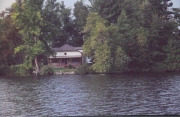 |
Rideau River near Kars: shoreline stabilization – rubble rip-rap. Stabilization is restricted to the minimum area necessary to protect the heavily used shore, as shown here. Trees shade the water near shore to reduce water temperatures and improve fish habitat. |
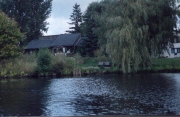 |
Rideau River near Manotick: natural buffer – residential. This photo shows an example of protecting a natural shoreline buffer. Gardens and lawns set back from the river reduce direct runoff of fertilizers and pesticides into the river. A natural buffer further reduces runoff, prevents erosion, and provides habitat. The shoreline can still be used for passive enjoyment. |
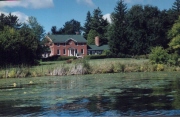 |
Rideau River near Manotick: natural buffer – residential. This shows another example of protecting a natural shoreline buffer. The lawn can be mowed, but mowing should stop to leave at least a 3 metre buffer strip of natural vegetation along the shore. |
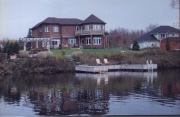 |
Rideau River near Manotick: small footprint permanent dock – residential. The current requirement for dock design calls for a straight structure to reduce the overall size. This dock, although not straight, has single supporting posts which reduces impacts on the river bed and its fauna. Access here is restricted to a single point with steps to prevent erosion. The shoreline is left natural, but should have trees and shrubs added for shade and shoreline stabilization. |
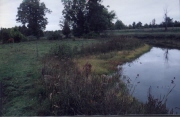 |
Rosedale Creek near Rosedale: restored buffer zone – farm. Along this creek the shoreline vegetation has been restored (naturally regenerated) using fencing to prevent cattle access. Trees have been planted to add shade to cool the water and provide additional wildlife habitat. Natural vegetation prevents shoreline erosion and improves water quality. |
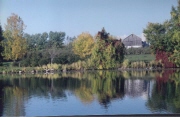 |
Rideau River at Kilmarnock: natural buffer – farm.The natural shoreline vegetation (trees, shrubs) here provides wildlife habitat and protects the shoreline from erosion. The natural shoreline beauty is maintained for all to enjoy. |










